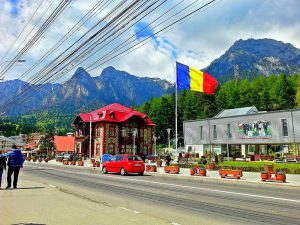Culture day is a day when students, parents, and teachers try to create, celebrate, and participate in artistic and cultural events in their communities. The goal of the Culture Day is to raise students’ accessibility, awareness, and partnership so they could develop into well-rounded individuals one day, and learn about the diverse world in which they live.
Hundreds of volunteer groups at the national and provincial level support thousands of artists, cultural workers, organizations and groups in hosting free participatory public activities, which take place in cities and towns across hundreds of countries in the world.
Thousands of activities are registered each year at the official website of Culture Days as they try to catalyze and inspire great public participation in the arts and cultural life of our communities. These activities are centered around different cultural practices, and they help youth appreciate their peers and broaden their horizons. Here are some ideas how to celebrate Culture Day with your kids:
Druid toilet paper roll craft
A druid was a religious leader in the Celtic areas, from about 1500 BC to somewhere around 50 AD. Druids were doctors, judges, and lawmakers in real life. Here are the materials you need for a simple three-dimensional druid:
- Toilet paper roll or cardboard tube
- Something to color with
- Scissors
- Glue
- Paper
- Printer
Instructions:
- First print out the craft template of choice (since druids were both male and female), then cut out the template pieces.
- Glue the large rectangular piece on so you can cover the tube, but pay attention that
the slightly larger part is at the top (a dress or a robe).
- Glue the head and arms of the toilet paper roll.
- Fold the tabs on the feet and glue them inside to create a perfect 3D effect.
- Fold the cloak in half and glue the two pieces and color it on both sides.
Make a Chinese New Year Crown or Hat

Make a simple construction paper “hat” the kids will have tons of fun creating, decorating, and they will certainly enjoy wearing it. You can decorate it with paper flowers, but you can also use stickers, markers, or gel pens instead. For material you need:
- Red construction paper
- 2 gold pipe cleaners
- Pencil
- Scissors
- Tape
- Printer
- Paper
- Gold tissue paper
- Gold thread
The instructions:
- Print a template and color it if necessary.
- Cut out the template pieces
- Tape the pieces end to end to make a long bit
- Wrap around child’s head and trim of the excess
- Wrap the pipe cleaner around a pencil so you can make a “spring” with it
- Repeat with the other pipe cleaner
- Tape both pipe cleaners for the long piece of construction paper so they stay in front of the head
- Tape the paper ends together and put it on


























